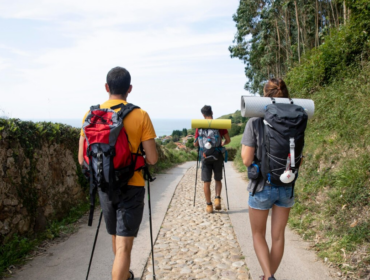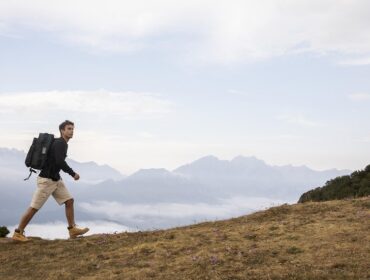There’s something magical about spending the night under a tarp shelter. It’s you, your gear, and the great outdoors. But if all you know is the classic A-frame setup, you’re missing out on a world of possibilities. Tarp shelters can be as versatile as your imagination allows, offering solutions for every environment – from breezy summer nights to rain-soaked mountain trails.
Let’s dive into tarp shelter configurations, materials, and tips that’ll make you a tarp shelter pro.
Why Choose a Tarp Shelter?
Tarp shelters are not just lightweight; they’re a camper’s best friend when it comes to versatility and portability. Unlike traditional tents, which can be bulky and rigid, tarps pack down small, making them easy to fit into even the tightest backpacks. This portability ensures that you’re always prepared, no matter the type of adventure ahead.
More than that, their adaptability shines in diverse environments. Whether you’re seeking an ultralight bivy tent replacement for hiking light or an open-air shelter to marvel at the stars, a tarp can meet your needs.
To fully unlock a tarp’s potential, the right accessories make all the difference. Adjustable poles allow you to modify your setup for any terrain or weather, while durable stakes keep your tarp secure even in harsh conditions.
Beginner-Friendly Tarp Shelter Configurations
If you’re new to tarp shelters, start with setups that don’t require engineering degrees or endless hours of frustration. Here are three to try:
-
The Ridgeline Setup
This classic configuration uses a rope or cord tied between two anchor points, like trees. Drape your tarp over the line and secure the edges with stakes. The Kelty Nobendium II Stakes make this easy, with their tapered tips that sink effortlessly into the ground.
When the skies open up, you’ll need a fully enclosed setup. Think of it as your portable fortress. The “cocoon” style, for example, uses a ridgeline with the sides of the tarp pulled down tight to the ground. Add the MSR Shock Cord Replacement Kit for extra tension and security.
-
The Pyramid Shelter
The pyramid is great when you’re short on time or resources. Stake down the tarp corners and use a single pole, like the Kelty Staff Pole, in the center to prop it up. It’s perfect for windy conditions because of its aerodynamic shape.
In windy conditions, keep your shelter low to the ground. The “caterpillar” configuration, where the tarp hugs the ground, minimizes surface area exposed to the wind. The MSR Cyclone Stake Kit ensures your setup stays anchored in soft or sandy soils.
-
The Plow Point
Ideal for one-person setups, the plow point is both quick and effective. Anchor one corner of the tarp high on a tree or pole, then stretch the remaining corners to the ground. Use stakes like the Nemo Airpin Ultralight Stakes for extra stability.
These tarp shelter configurations are simple but incredibly effective. They’re a great place to start if you’re learning how to make a tarp shelter.
When it’s blazing hot but you’re worried about mosquitoes, the Eureka NoBugZone CT13 Shelter is your best friend. It combines full bug protection with UPF 30 sun shielding, so you can relax without buzzing interruptions.
Overall, the ridgeline setup is perfect for beginners, offering a straightforward way to create a sturdy structure. All you need is a rope tied between two trees and a tarp draped over it. Secure the edges with stakes, and you’re good to go. Anchoring one corner of the tarp high and stretching the rest to the ground gives you a snug shelter in minutes.

Best Tarps for Camping
The right tarp makes all the difference. If you’re looking for strength, portability, and versatility, here are some top picks:
-
Kelty Adjustable Pole and Tarps
When it comes to setting up your tarp, having the right pole can make all the difference. This telescoping design lets you adjust the height based on your needs, whether it’s a snug setup at 80 inches or a breezy 99-inch canopy. Its aluminum build ensures durability without adding unnecessary weight, making it an ideal choice for campers who need versatile and reliable gear.
-
MSR Dromedary Bags
While not a tarp, this water storage solution is a game-changer when paired with your shelter. Its collapsible design is perfect for packing light, and it offers exceptional reliability for keeping hydrated on your trips. Camping isn’t just about protection from the elements; it’s also about staying energized, and this product ensures you’ll have clean water at your fingertips.
-
Lightweight Stakes
Securing your tarp is crucial, especially in rough conditions. High-quality stakes are the unsung heroes of camping gear. Lightweight and strong, options like the hexagonal design ensure easy anchoring in any terrain. Whether you’re on rocky ground or soft soil, the stakes’ durability keeps your shelter standing firm so you can focus on enjoying your trip.
Overall, high-quality tarps designed for camping bring strength and adaptability to your adventures. Adjustable poles make setting up easier, letting you change the height based on your needs. Lightweight stakes ensure your shelter stays anchored, whether you’re on rocky ground or soft soil.
Pairing the right tarp with these accessories guarantees a camping experience that’s both comfortable and secure.
DIY Tarp Shelter Hacks
Sometimes, the best tricks come from a little creativity:
- Angle one side lower than the other and use the runoff to fill water containers. The Gear Aid Balta Camp Hatchet comes in handy for crafting stakes or clearing ground for this setup.
- Avoid tripping over guy lines at night by using reflective cord. This pairs well with the MSR Shock Cord Replacement Kit for extra visibility.
- Got a broken tent pole? Don’t toss it! The MSR Pole Repair Splint lets you reuse it as a makeshift tarp support.
Ultralight Bivy Tent vs. Tarp Shelter
For ultralight backpackers, the choice often comes down to balancing weight, adaptability, and ease of use. Ultralight bivy tents are a compact, ready-made solution, offering full weather protection with minimal effort to set up. They’re a great option when you want simplicity and speed.
However, they lack the creative flexibility and open-air experience that tarp shelters provide. Tarps are not only lighter but also incredibly versatile, allowing for multiple tarp shelter configurations tailored to different environments and personal preferences. Imagine transforming your shelter to suit the wind direction or terrain on the fly—that’s the kind of adaptability tarps deliver.
Tarp shelters aren’t just a backup plan; they’re an essential part of camping and hiking. From beginner setups to advanced tarp shelter configurations for extreme weather, a tarp can handle it all. So grab your gear, practice those knots, and head out knowing you’re ready for anything the wild throws at you.
FAQs
Q: What’s the best way to secure a tarp in windy conditions?
A: Use low-profile setups like the caterpillar configuration and anchor with high-strength stakes.
Q: Can I use any rope for a ridgeline?
A: While any rope can work, reflective paracord or lightweight guy lines are better for visibility and durability.
Q: How do I prevent water from pooling on my tarp?
A: Angle your tarp so one side is slightly lower, allowing water to run off efficiently.





